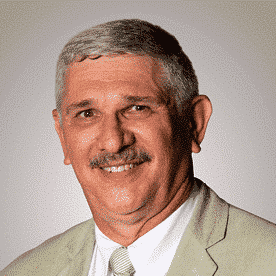Is it time for change in the Dog show world? Over the past few years, a great deal of change has taken place in the dog show world. The National Owner-Handled Series has been added to many shows and is growing every day. COVID-19 hit our country, causing the cancellation of thousands of events. Following the resumption of shows, we have seen many new protocols put into place, such as the wearing of masks, social distancing, a change in ring procedures, judges now not only marking their books but also pulling and handing out the ribbons, the Groups being divided into sections to allow for social distancing, the return to various outdoor/indoor undercover venues and, due to the reduction in the number of shows, a significant entry increase for many of the shows being held throughout the country.
These changes have had a huge impact on the running of shows. Most shows start judging at 8:00 in the morning and, in many cases, Best in Show is not being completed until 7:00 to 8:00 at night. Currently, judges are limited to a maximum of 175 dogs per day. But with many doing regular and Owner-Handled Groups, today’s judges may be judging between 200-275 per day. For many judges, this can mean anywhere from 8 to 11 hours a day standing, bending over, and judging. Those of us who do judge know that this means the day is not only physically demanding, but also mentally demanding. Calculate it over a three- to four-day period, and it is truly strenuous. Following the show, the judges barely have time to shower, eat dinner, and review their standards for the next day before they grab a few hours of sleep and are back at it the next day.
Those of us who
do judge know
that this means the
day is not only
physically demanding, but also
mentally demanding.
While exhibitors and handlers have breaks during the day, judges are lucky to get 45 minutes for lunch while they also must take time during the day to squeeze in photos for the winners. When you factor in such things as cold, heat, windy or rainy weather, and dirt floor venues, muddy grounds and the like, most judges are extremely tolerant and hardworking individuals who do their very best to keep things moving and running on time.
The show superintendents try to do a good job with the schedules, but following the AKC and social distancing guidelines makes our shows run longer and longer. Almost everyone at the shows feels that shows keep running much later than any time in the past.
Since it appears that a complete return to the way it used to be will not happen, I would like to share some suggestions for a change in the Dog show world by speeding up shows as well as for creating a safer, healthier procedure for judges.
- If judges are expected to also judge several Groups each day, it is time to reduce the number of dogs per day to a maximum of 150. Allowing for the standard 25 dogs per hour expectation and a 45-minute lunch would mean that no Groups would need to start any later than 2:45 each day.
- When judging the Group, the judge should not have to reexamine any dog that he or she judged earlier in the day. (Exceptions could be made for televised events.) After all, I don’t think any one of us has ever seen a dog lose its teeth, misplace its testicles, go oversize or gain that much weight between the Breed and the Group.
- Look into changing the after-lunch judging schedules to one with no breaks. Hopefully, by lunchtime, the judge should have judged about 100 of his/her 150-daily limit. Often, because of absentees and the like, a judge might have a 15-20-minute break between segments as scheduled. But, if the last segments are full, the judge is pushed to be finished in a hurry so as not to hold up the Groups. With only 50 or so dogs left after lunch, no break should be needed.
- The Four-to-Six Month Beginner Puppy competition is a wonderful opportunity for new puppies and new exhibitors to gain experience. In most cases, there are only one-to-four exhibits in each breed, with most usually only having only one. Why not eliminate the Breed competition and bring in all eligible puppies in that particular Group, and judge them all as one Group with four placements? You would still have seven Group winners, plus Miscellaneous, but all the puppies would have a great opportunity to be in the ring for a longer period and it would cut down on the time and paperwork that’s required under the current system.
- Rather than having the Owner-Handled Groups follow the regular Groups, start them earlier before the regular Group. The order would not need to be the same and it would avoid delays because of judging conflicts. All too often, the Owner-Handled Best follows the regular Best in Show, when most people have left the grounds and no one is left to cheer on the Owner-Handled Group winners.
- Many Owner-Handlers feel like second-class citizens. All clubs should be required to, at least, provide the same size ribbons and rosettes that are given to the regular Group and Best in Show winners.
- If a club offers the Owner-Handled competition, they should not also be allowed to offer Best Bred-By Exhibitor Groups, Puppy Groups or Veteran Groups, as these take up a great deal of time and can be confusing to keep track of during the day’s judging.
- The time has come to recognize that using ramps for the judging of many breeds would be a safer and better way for judges to examine numerous breeds. A large, towering judge can be a little overwhelming to some of the younger entries in many breeds. It is also a safer and more secure way to examine these breeds.
- Look at scheduling single entry breeds late in the day. Why make the exhibitor be there at 8:00 a.m. with the only entry in its breed, and then make them wait until late afternoon to participate in the Group?
I believe change in the Dog show world we will see is some reduction in the total number of shows in the future, and I also think we will continue to have some shows and circuits where the entry will be larger than we have seen in recent years.
The show superintendents
try to do a good job with
the schedules, but following
the AKC and social distancing
guidelines makes our shows
run longer and longer.
Almost everyone at the
shows feels that shows keep
running much later than
any time in the past.
I also understand the economics of putting on a show and the cost of judges, ribbons, venues, stewards, and the many other things that go into putting on a show. However, if managed properly, it can be done cost-effectively.
We are also obligated to the exhibitors to give them judges who are not physically or mentally exhausted because they are judging 250-plus dogs per day under various conditions.
As I’ve mentioned earlier, these are just my thoughts. I have been judging since 1985 and have served as a show chair and cluster chairman on numerous occasions. I have listened to my fellow judges, the exhibitors, and the club members. In my opinion, we all want safe, efficient, high-quality shows that are completed in a timely matter. What do you think, is it time for Change in the Dog Show World?









